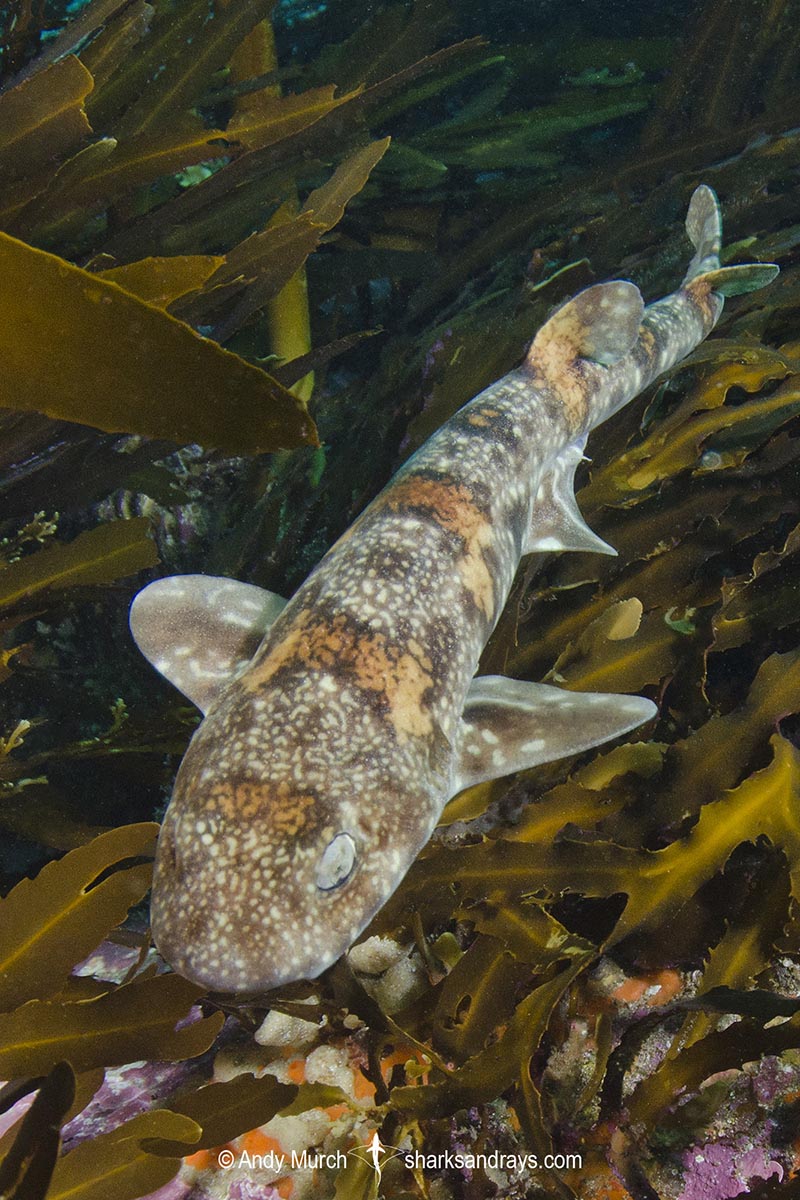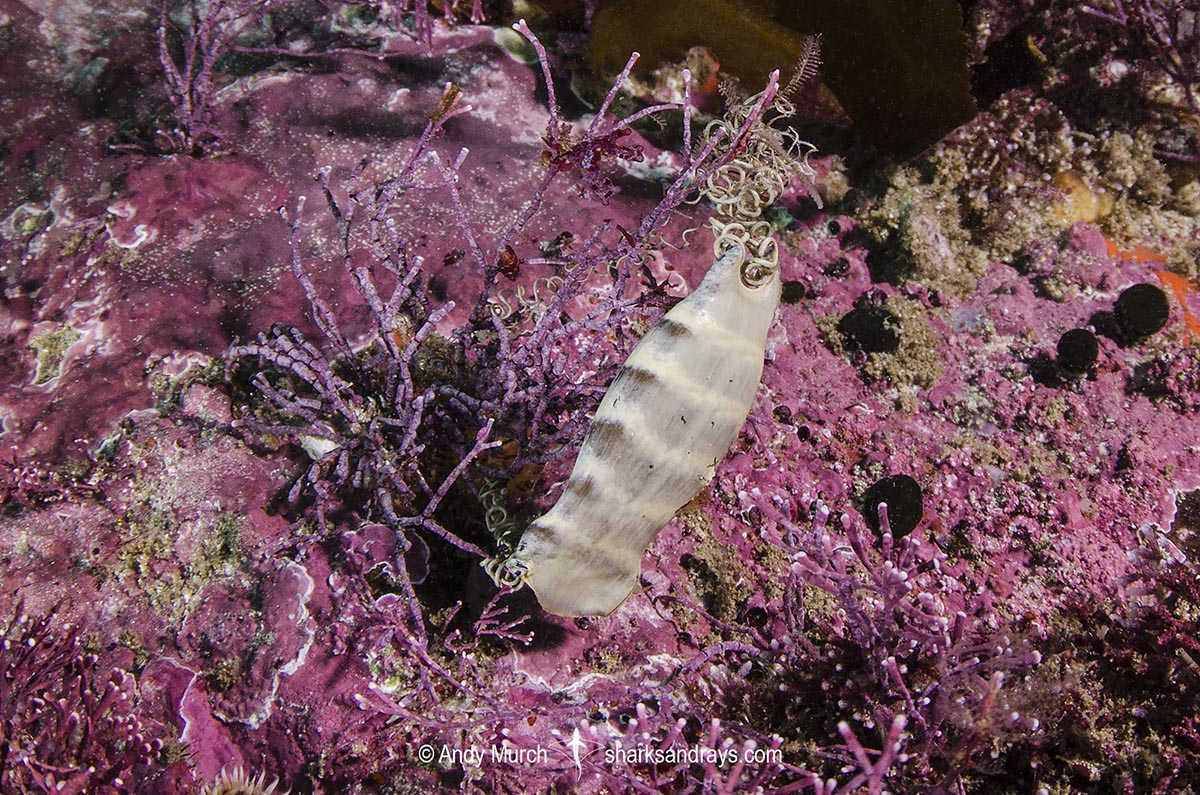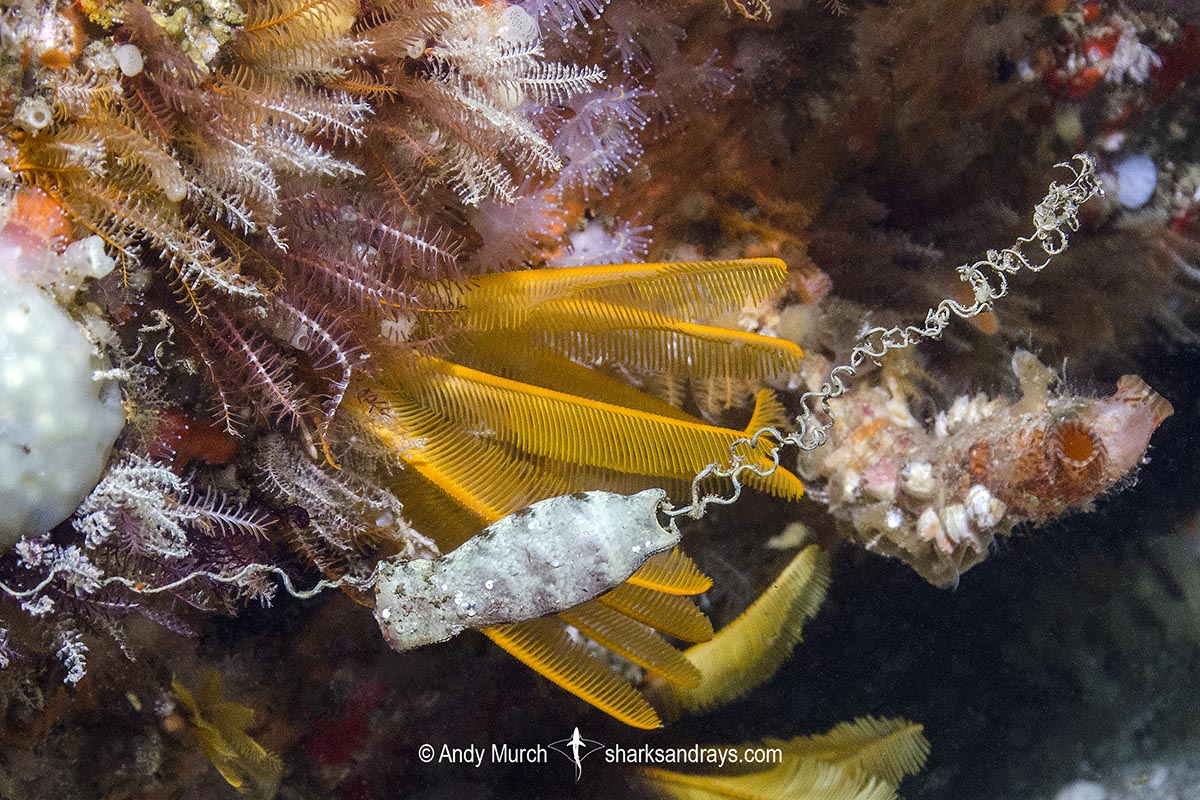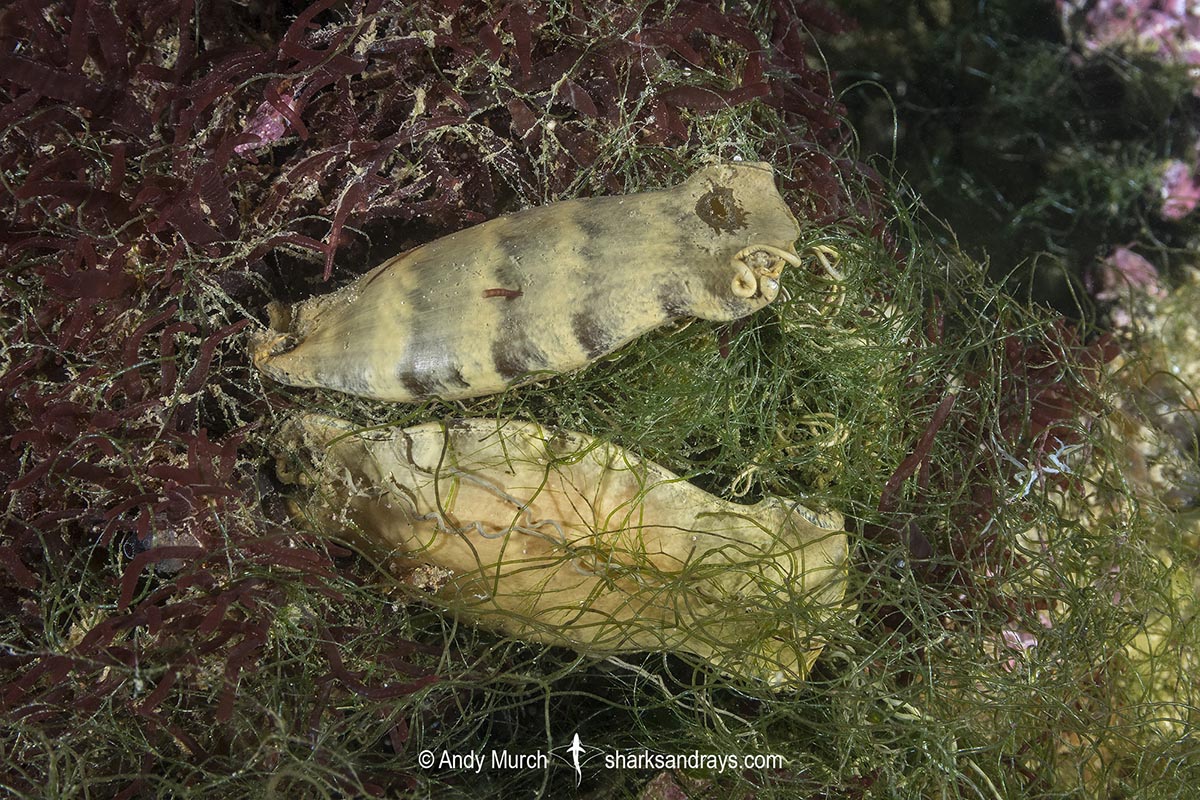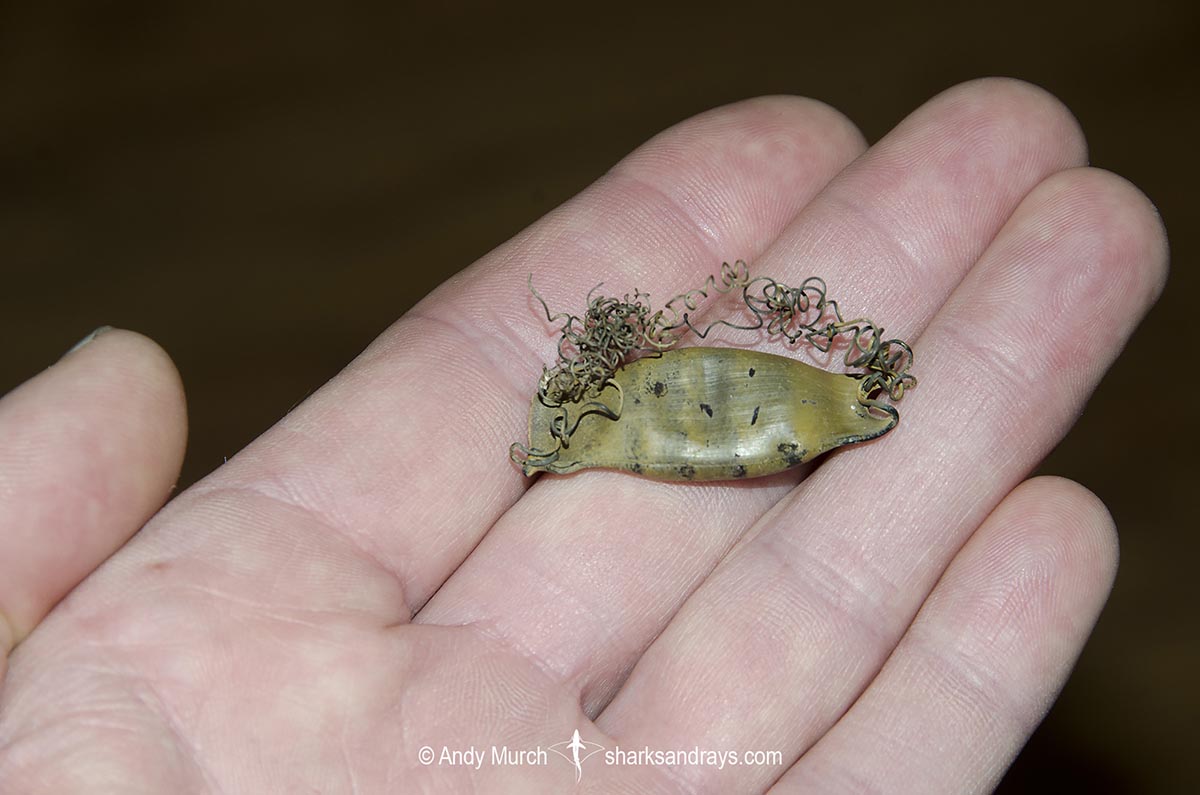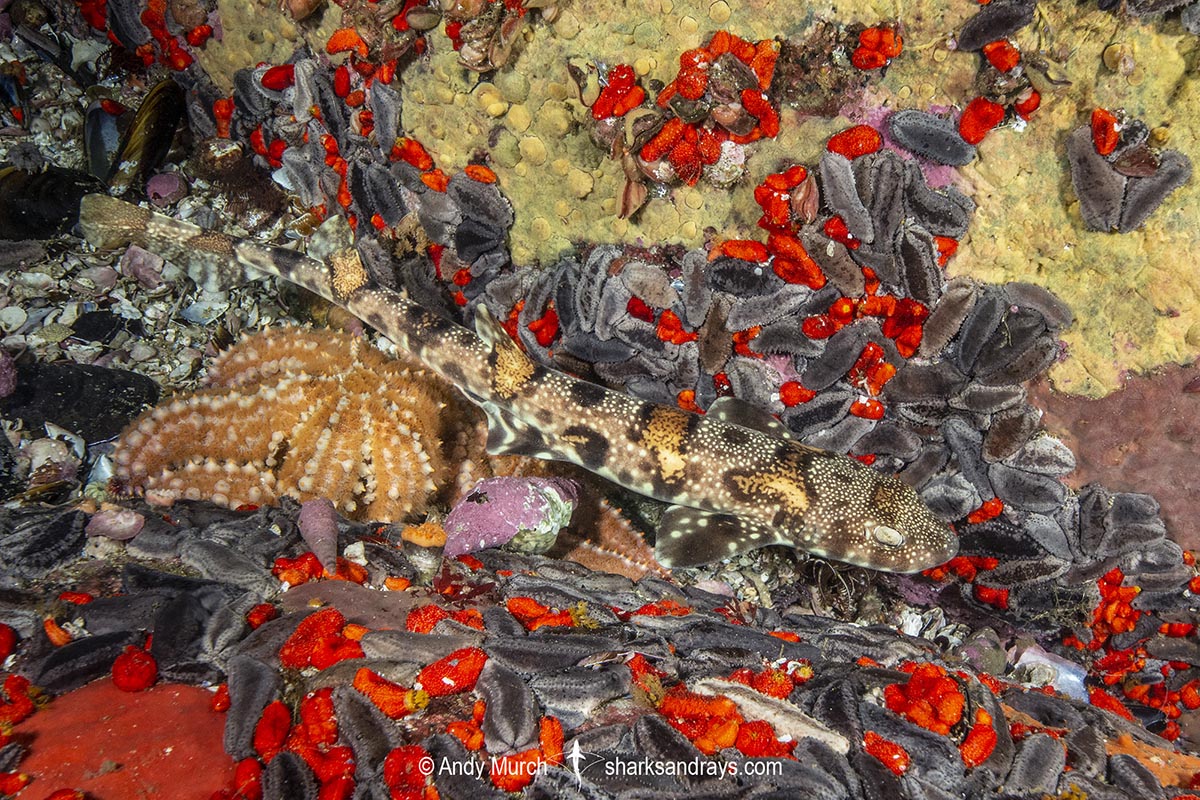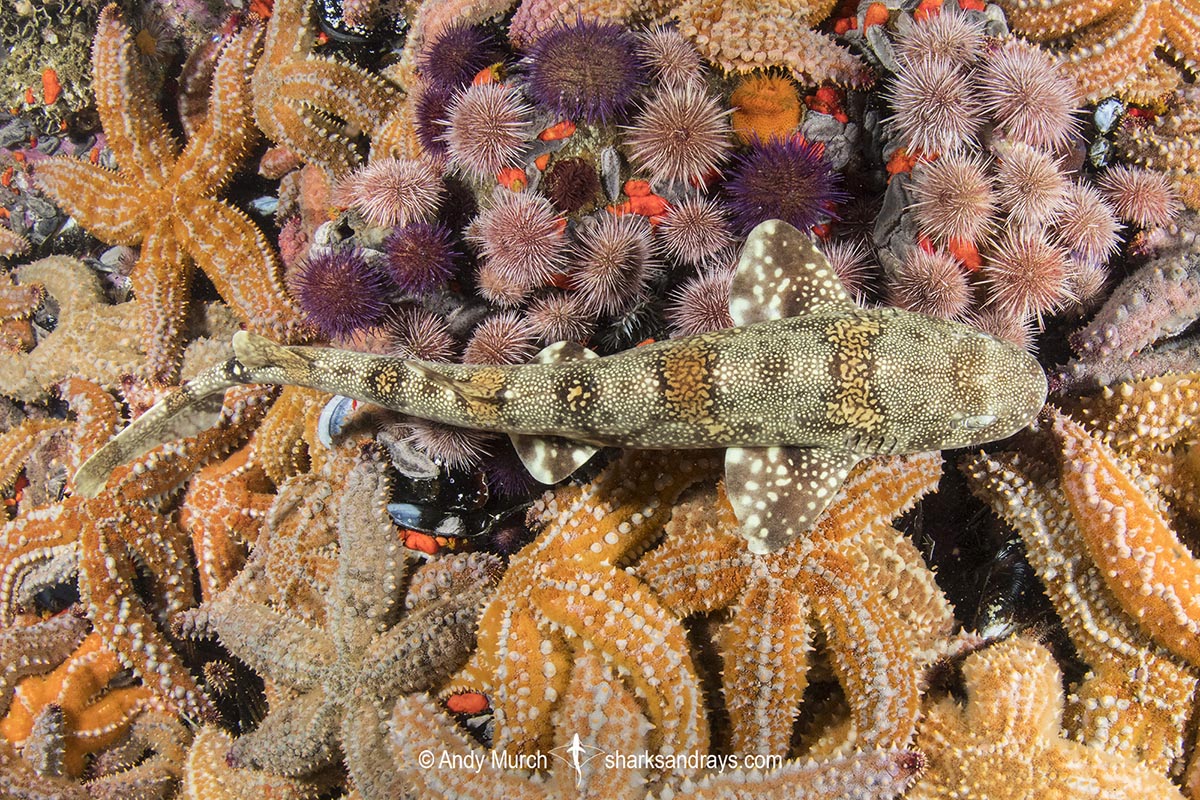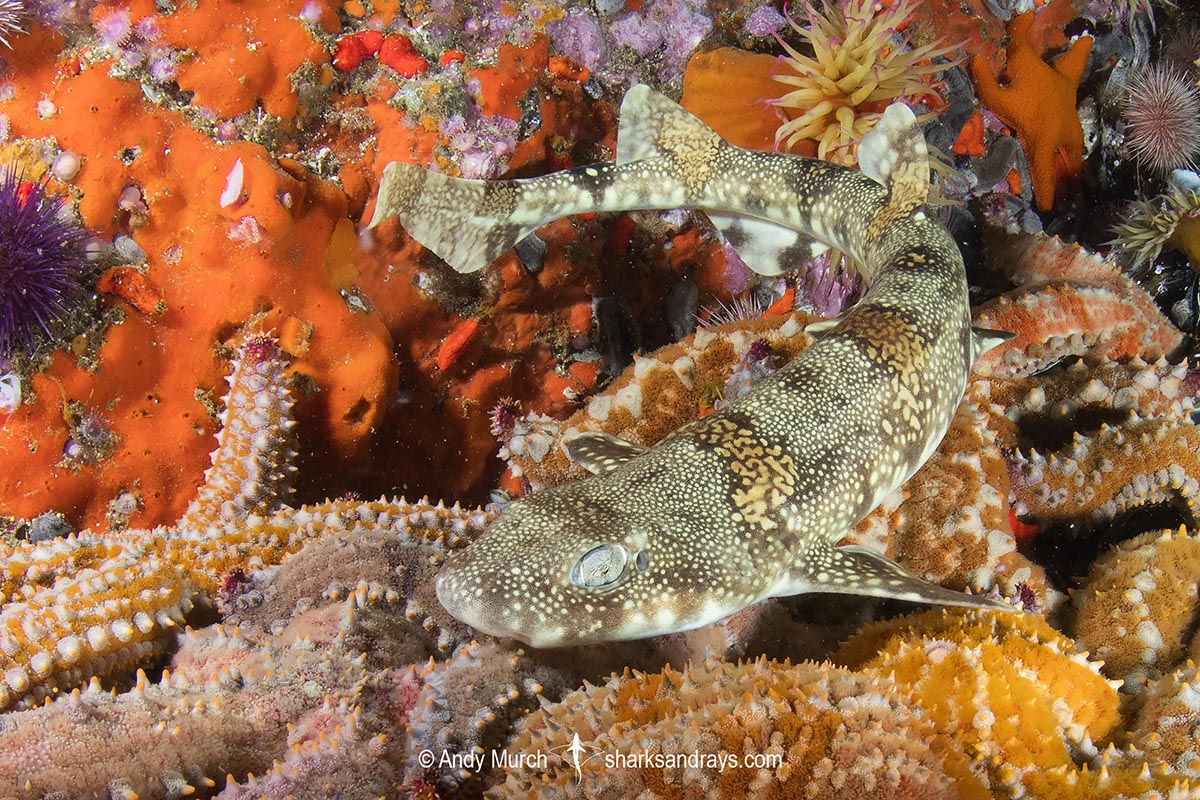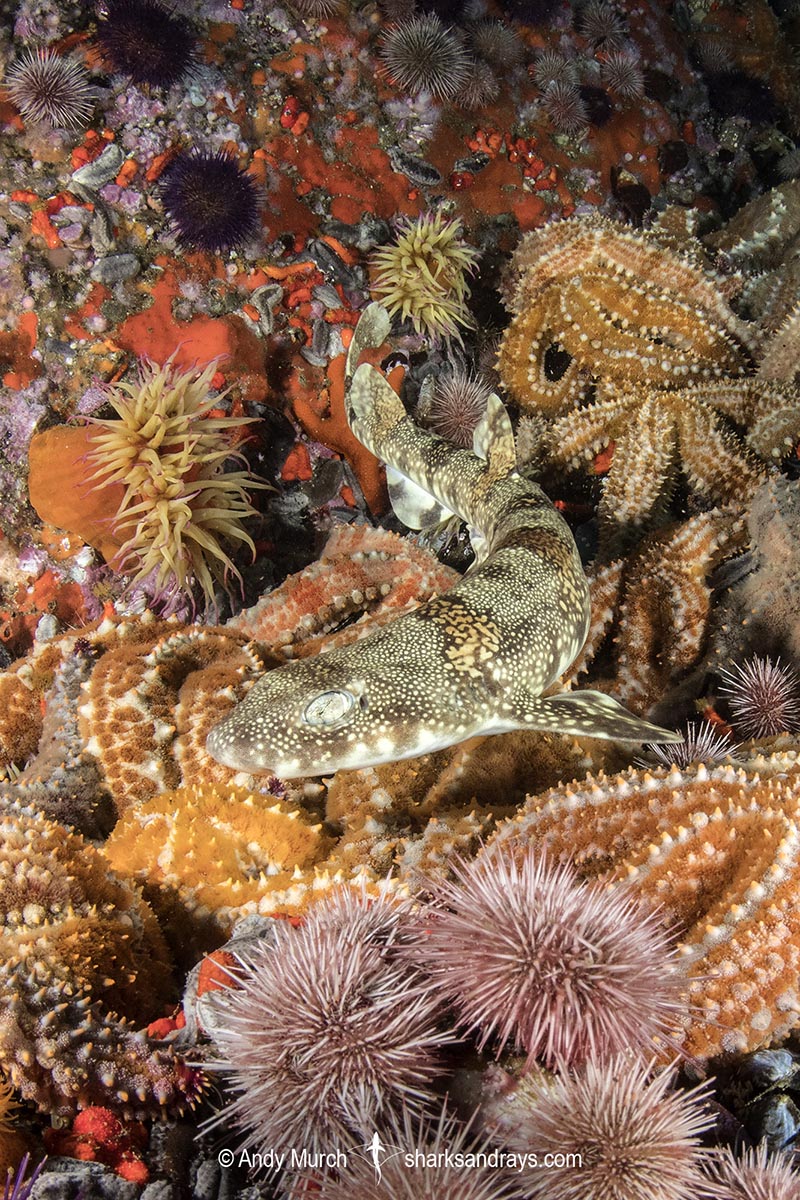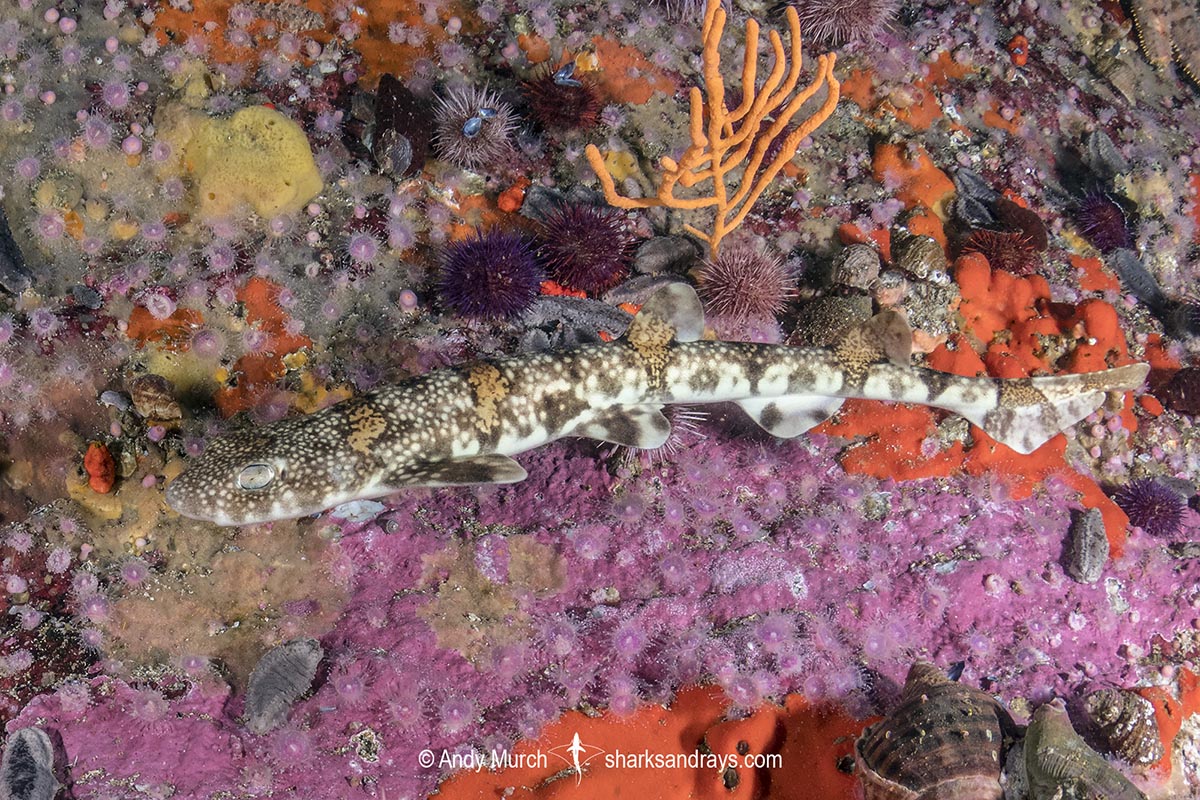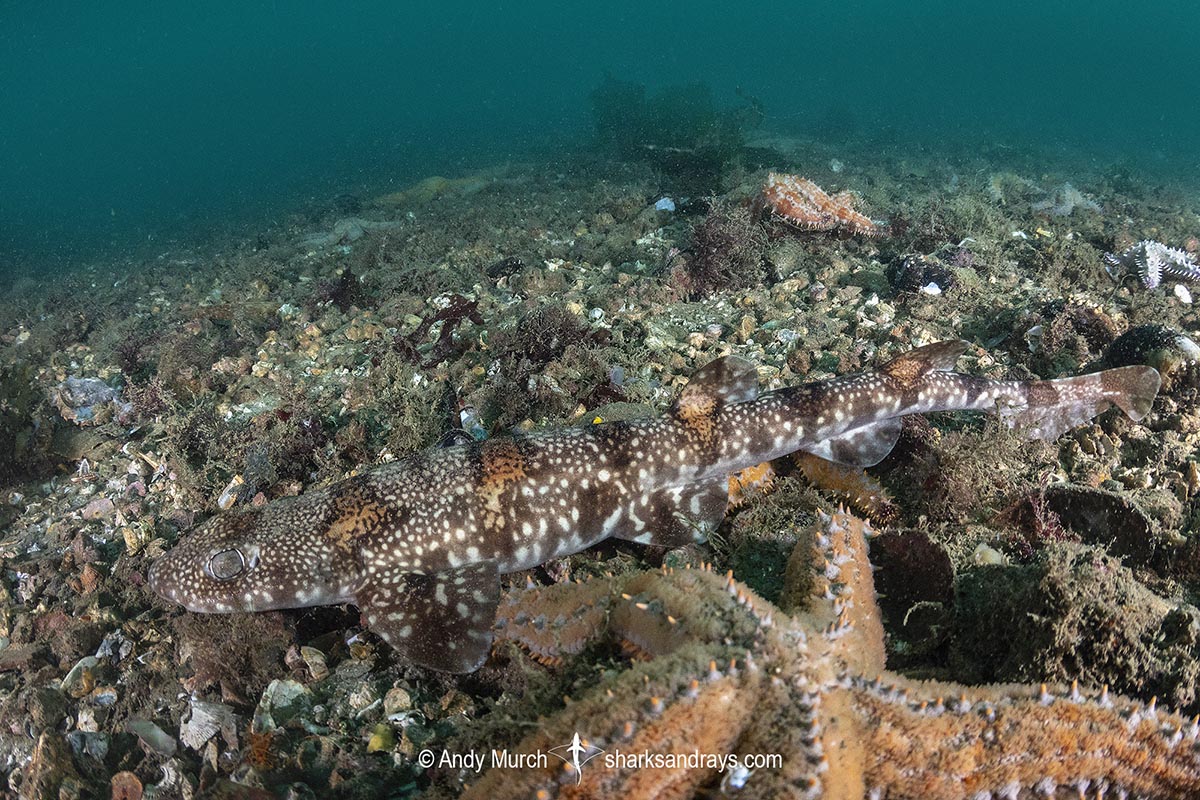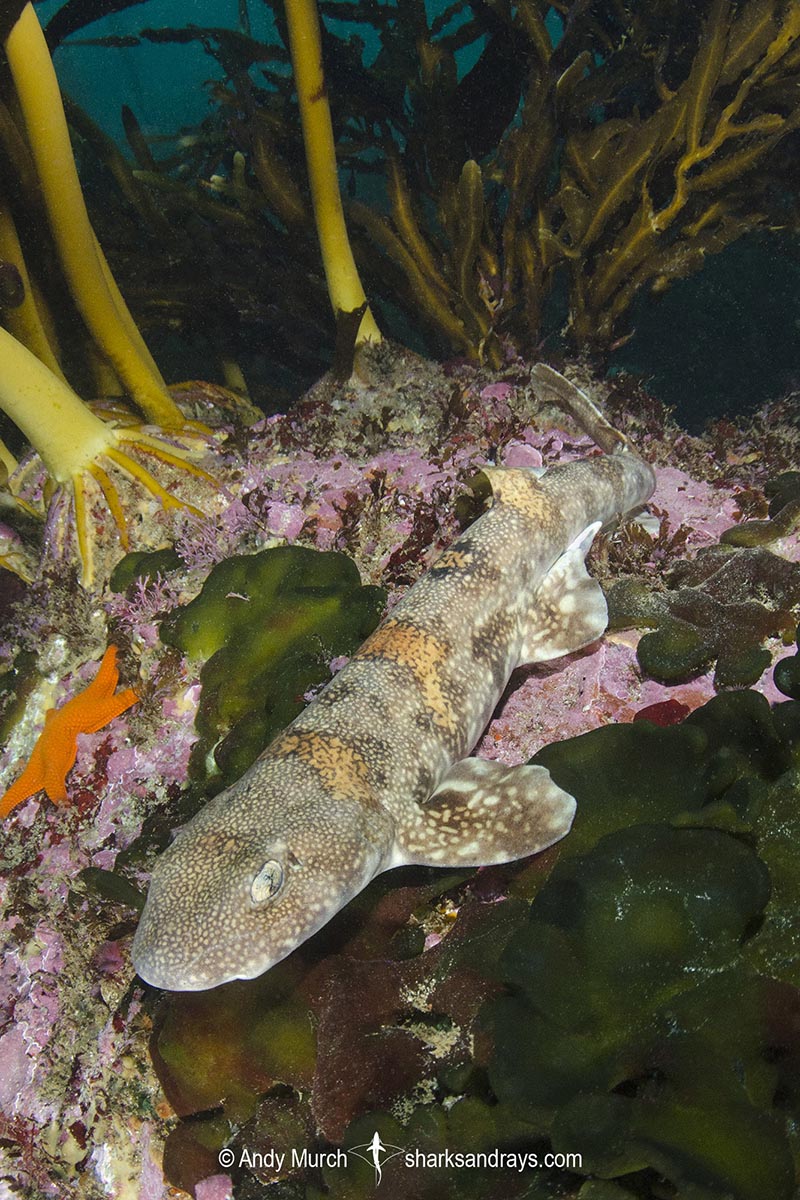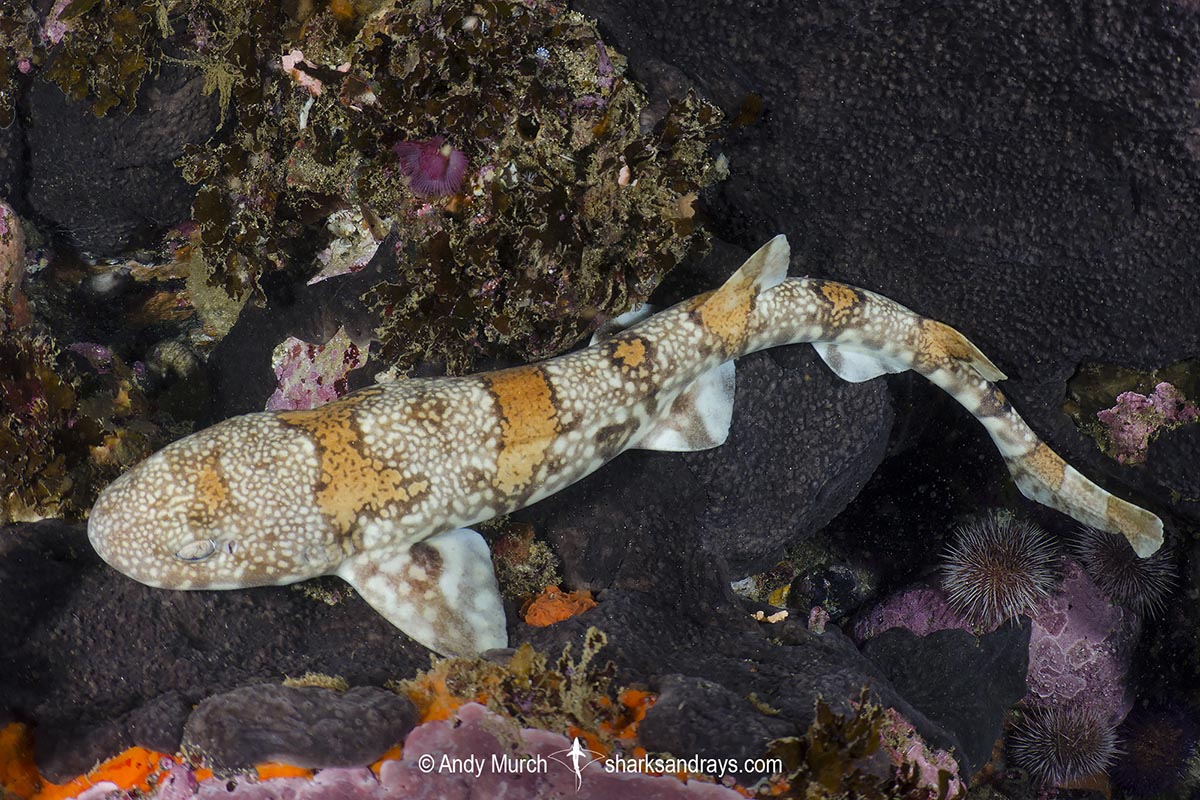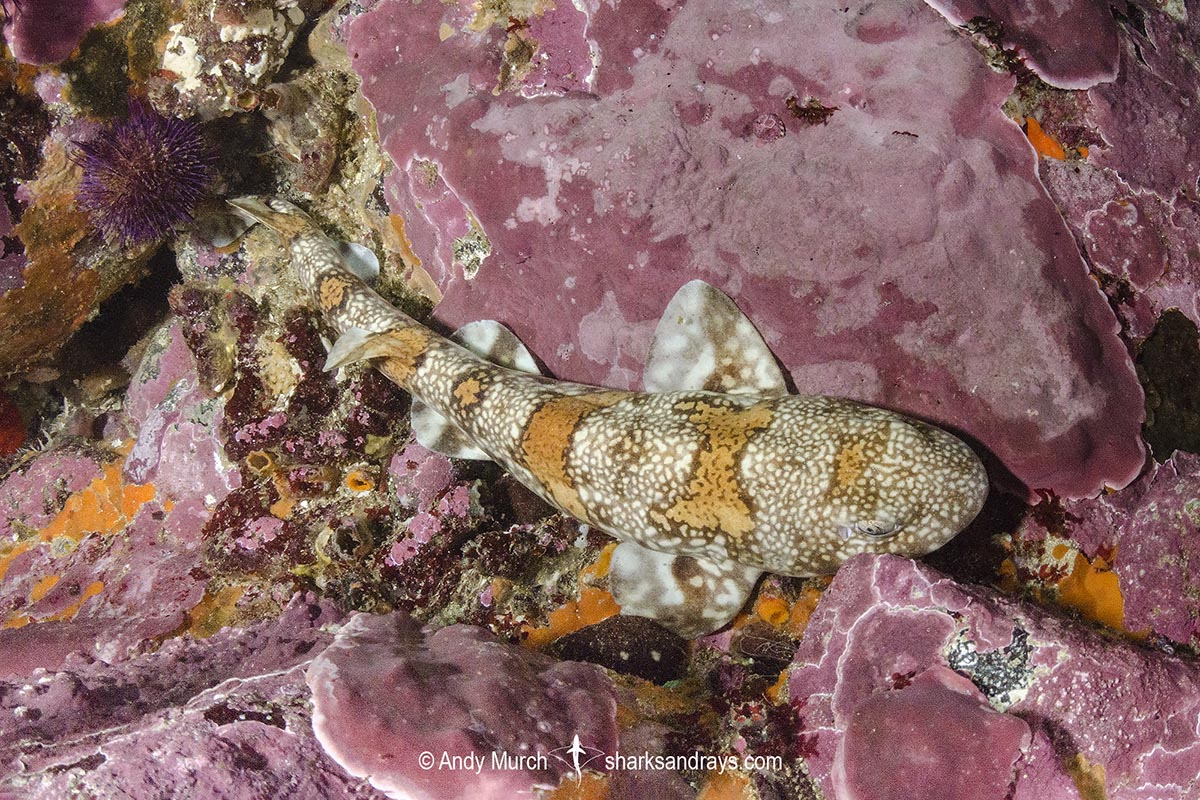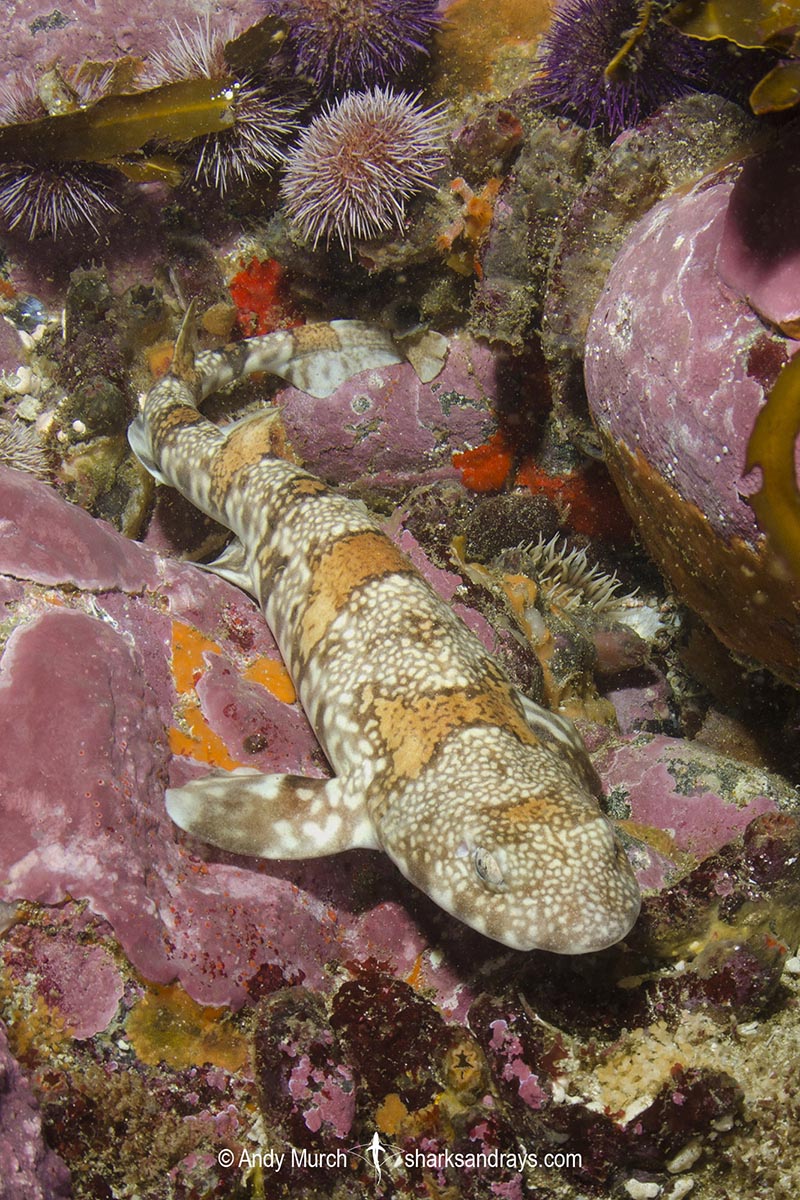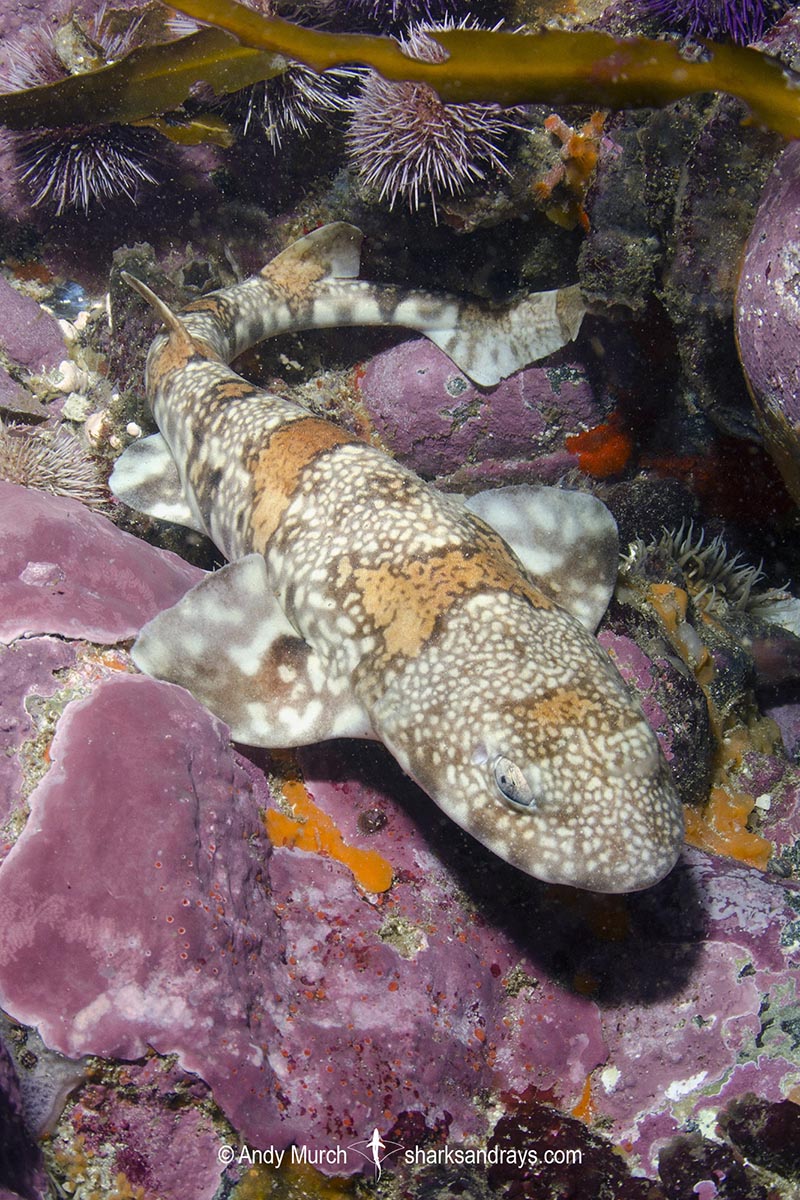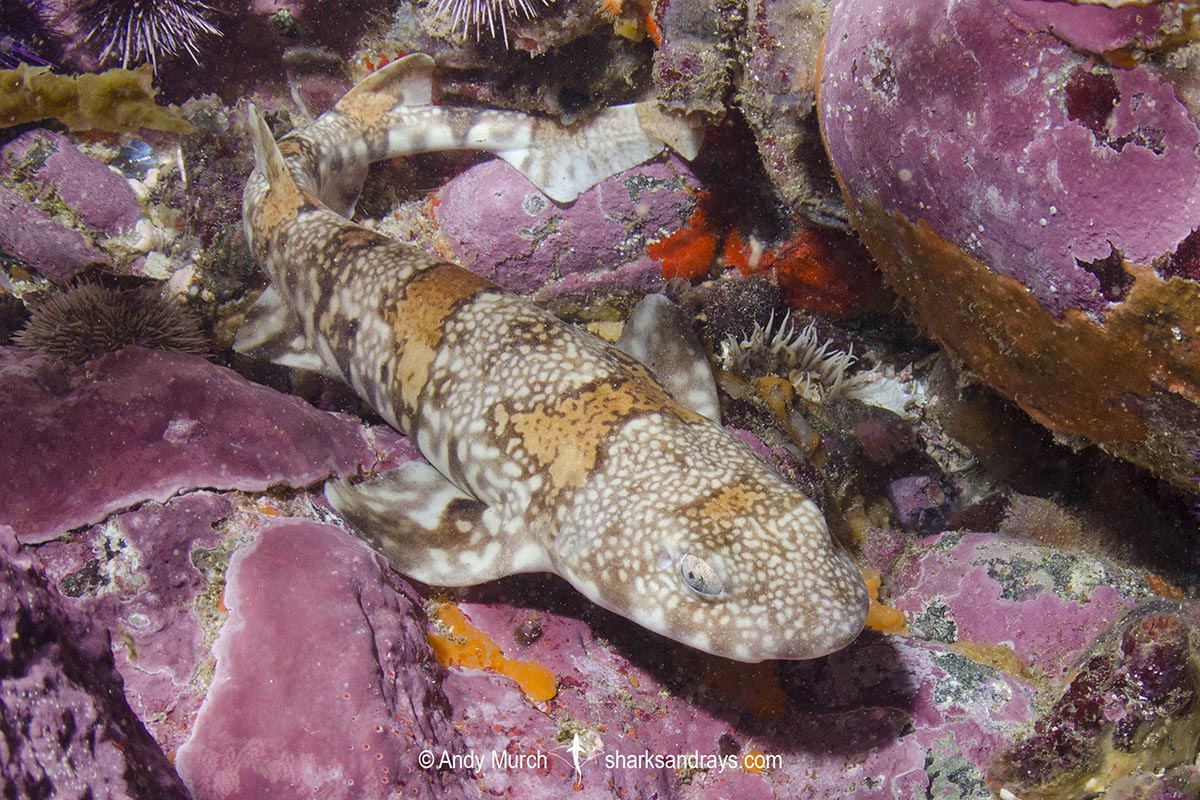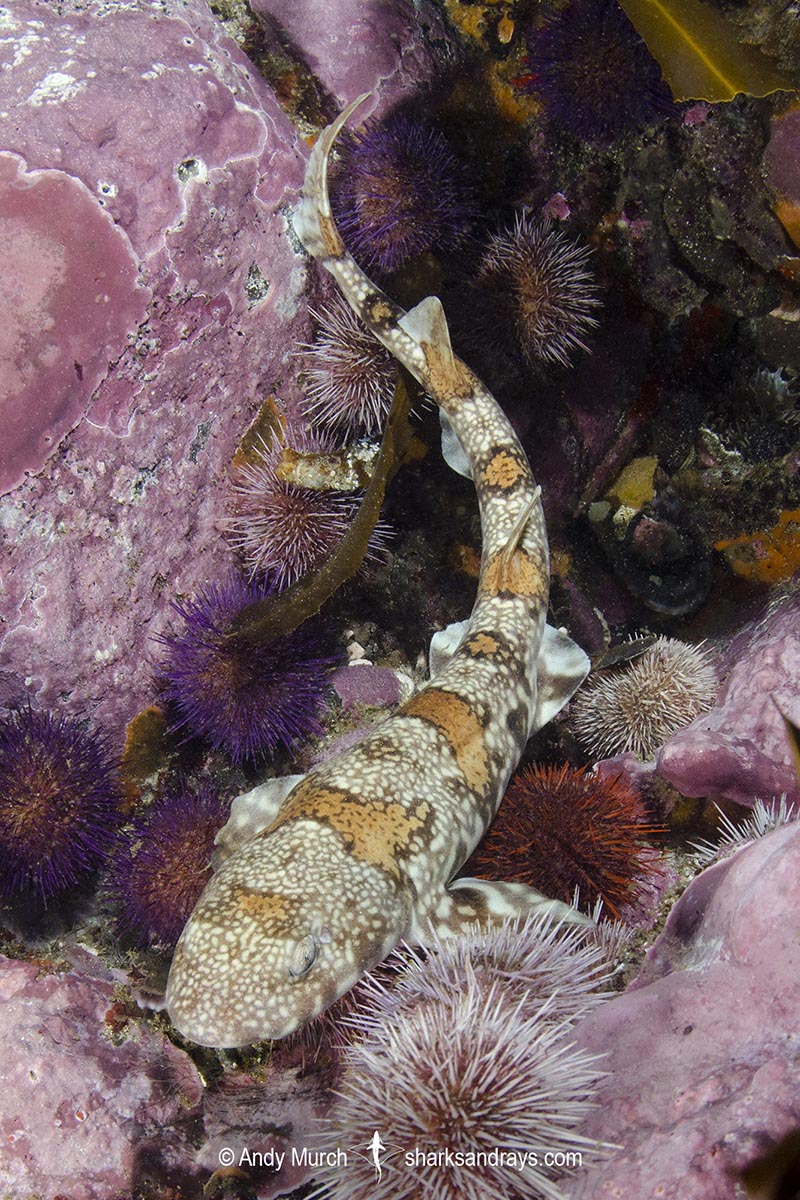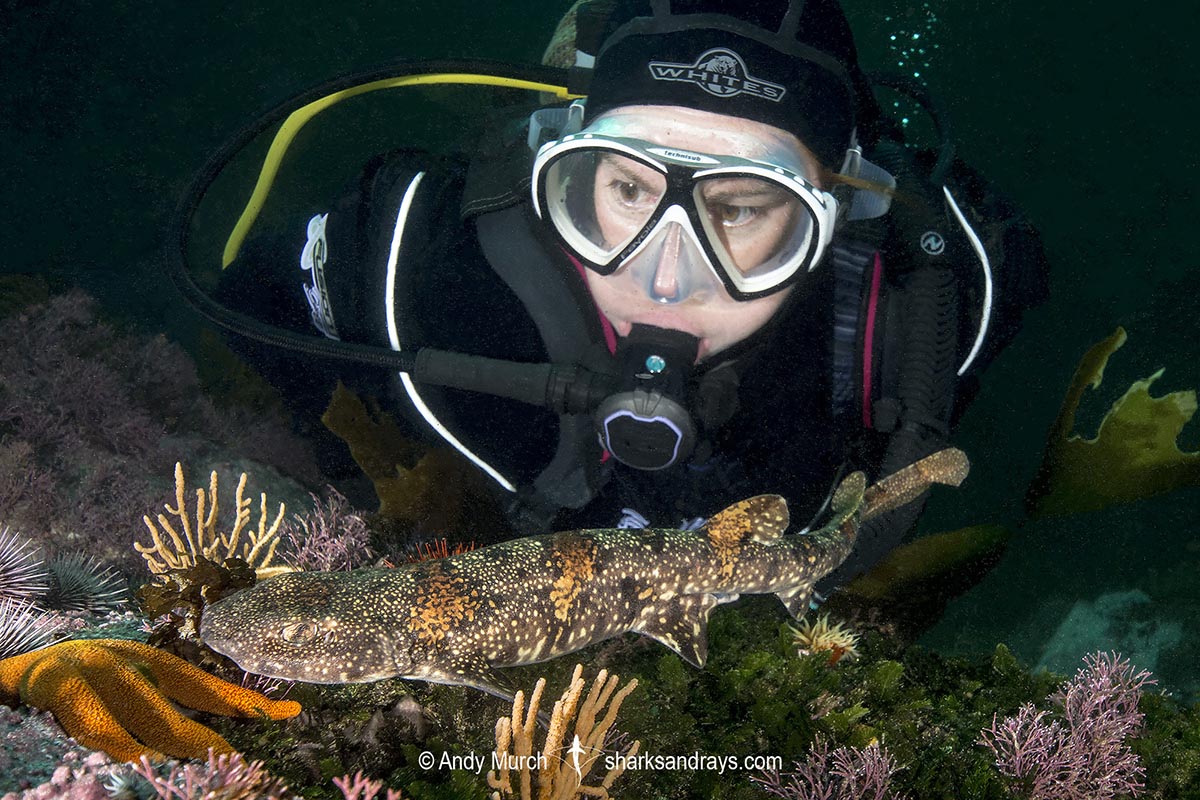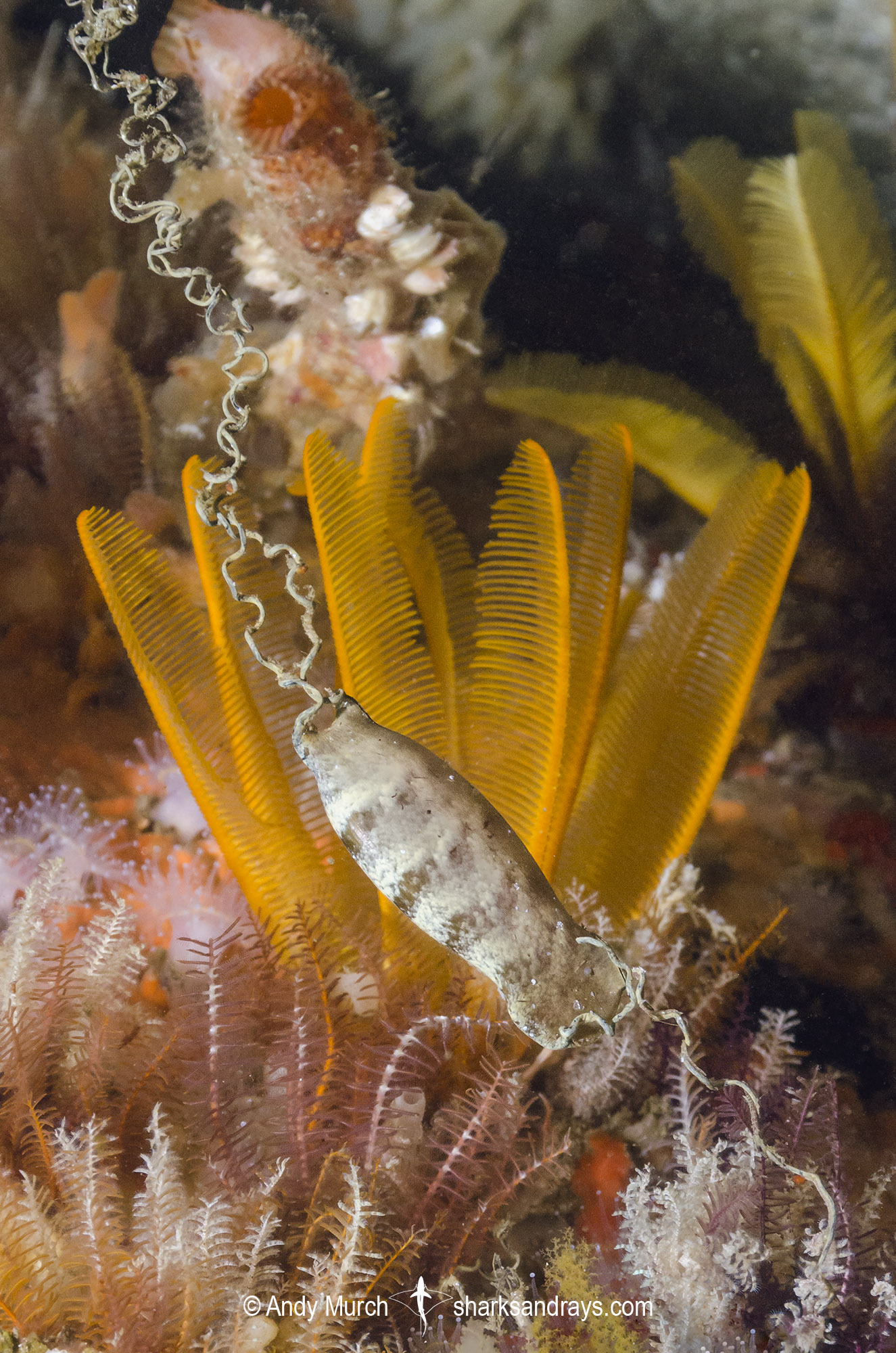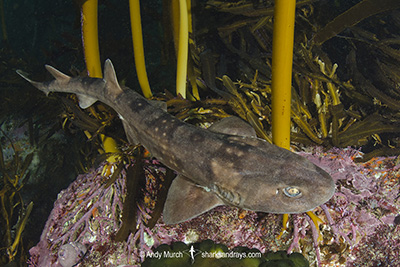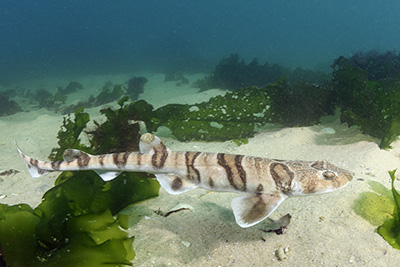Common names
Puffadder Shyshark, Happy Eddie.
Binomial
Haploblepharus edwardsii.
Synonyms
Scyllium edwardsii, Squalus edwardsii, Squalus edwartsii.
Identification
Small size. Head broad and bluntly rounded. Greatly expanded nasal flaps. First dorsal origin approximately level with pelvic fin insertion. First and second dorsal fins of equal size. Lower lobe of caudal fin straight edged.
Large golden or reddish-brown saddles on back and tail. Saddles usually contain small irregular dark spots. Brown background between saddles densely covered in small white/pale spots. Overall coloration may appear light or dark.
Size
Maximum length 60cm. Born at approx. 10cm.
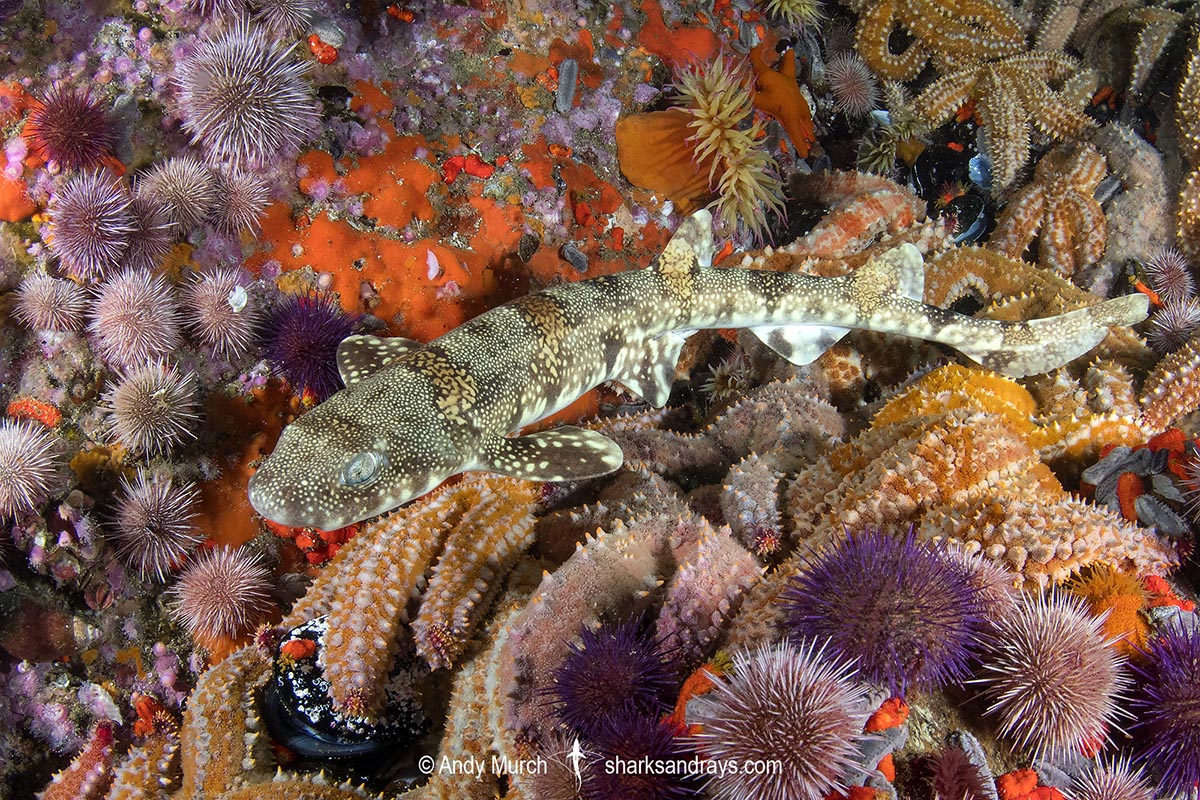
Conservation Status
ENDANGERED
The Puffadder Shyshark or Happy Eddie is a bycatch component in seine net, gillnet, trawl, line fishing, lobster, and shark longline fisheries. Climate change has also affected this species. It is estimated that Haplobepharus edwardsii has undergone a population reduction of 50–79% over the past 60 years.
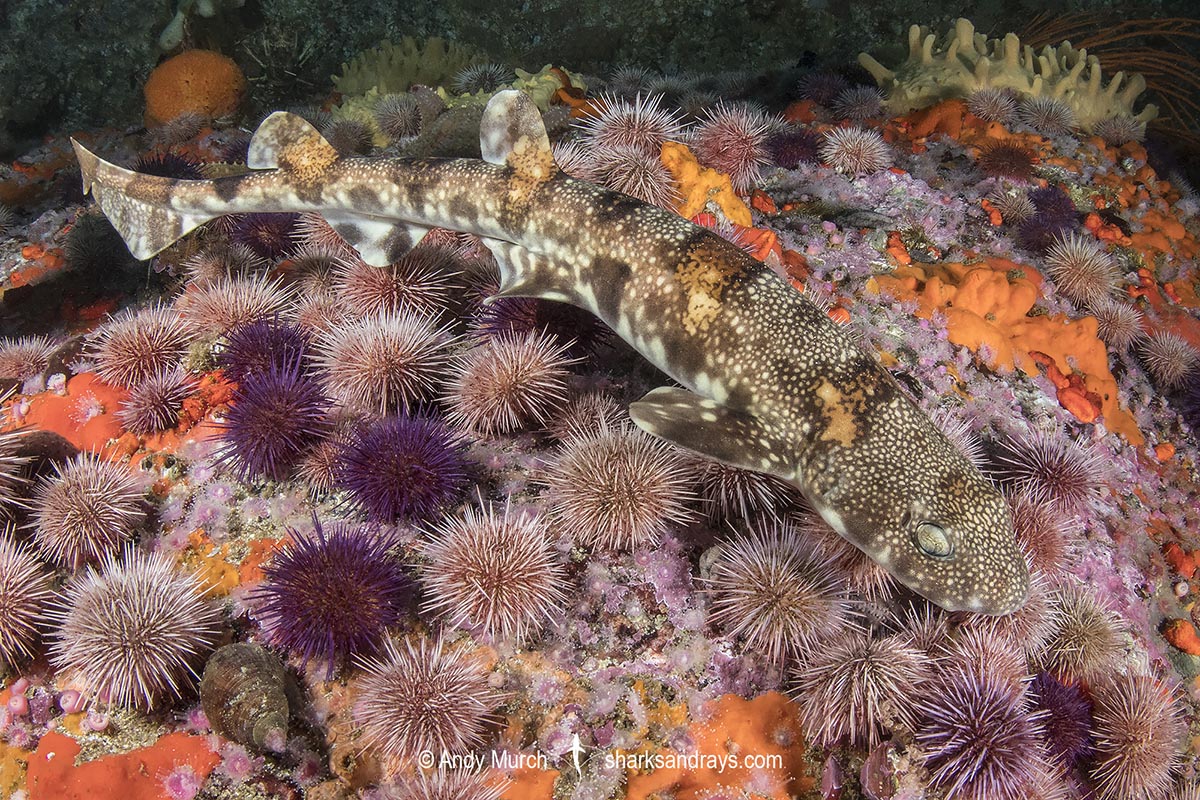
Habitat
Rocky reefs, kelp forests, and sand flats. Found from 1-288m. Deeper in the east (30-90m). More inshore in the west (5-30m)
Distribution
The puffadder shyshark is endemic to South Africa in the Southeast Atlantic and Western Indian Oceans, occurring from Langebaan Lagoon, Western Cape, to Algoa Bay, Eastern Cape.
Reproduction
Oviparous. Lays paired egg cases. Egg case size 3.5-5cm x 1.5-3cm.
Diet
Small bony fishes, fish offal, crustaceans, cephalopods, and polychaete worms.
Behavior
Rests in crevices during the day. Known to be social; puffadder shysharks in aquaria often rest together in small groups. Curls into a ball with tail over eyes when threatened; hence common name ‘shy shark’.
Reaction to divers
Extremely easy to approach. Will allow divers to follow it through the kelp forest as it searches for food. Easily attracted by small amounts of bait.
Diving logistics
The puffadder shyshark is mostly encountered at the western end of its range where it is found much shallower and closer to shore.
Virtually all rocky or kelpy dive sites in and around False Bay appear to have an abundance of shysharks including puffadders.
In particular, Miller’s Point on the west end of Simonstown is a popular dive site that can be dived by boat or from shore if the surf is not too high. It would be unusual not to see a puffadder shyshark or two, plus numerous other catshark species, spotted gully sharks, and sometimes sevengill sharks at this beautiful spot.
False Bay is the first stop on Big Fish Expeditions’ South African Endemic Shark and Ray Expedition.
Similar species
Dark Shyshark Distinguished by darker overall coloration, irregular saddles without obvious dark edges, and less spots.
Tiger Catshark Distinguished by less intricate markings lacking small spots. Plus, more slender body, and upturned snout.

